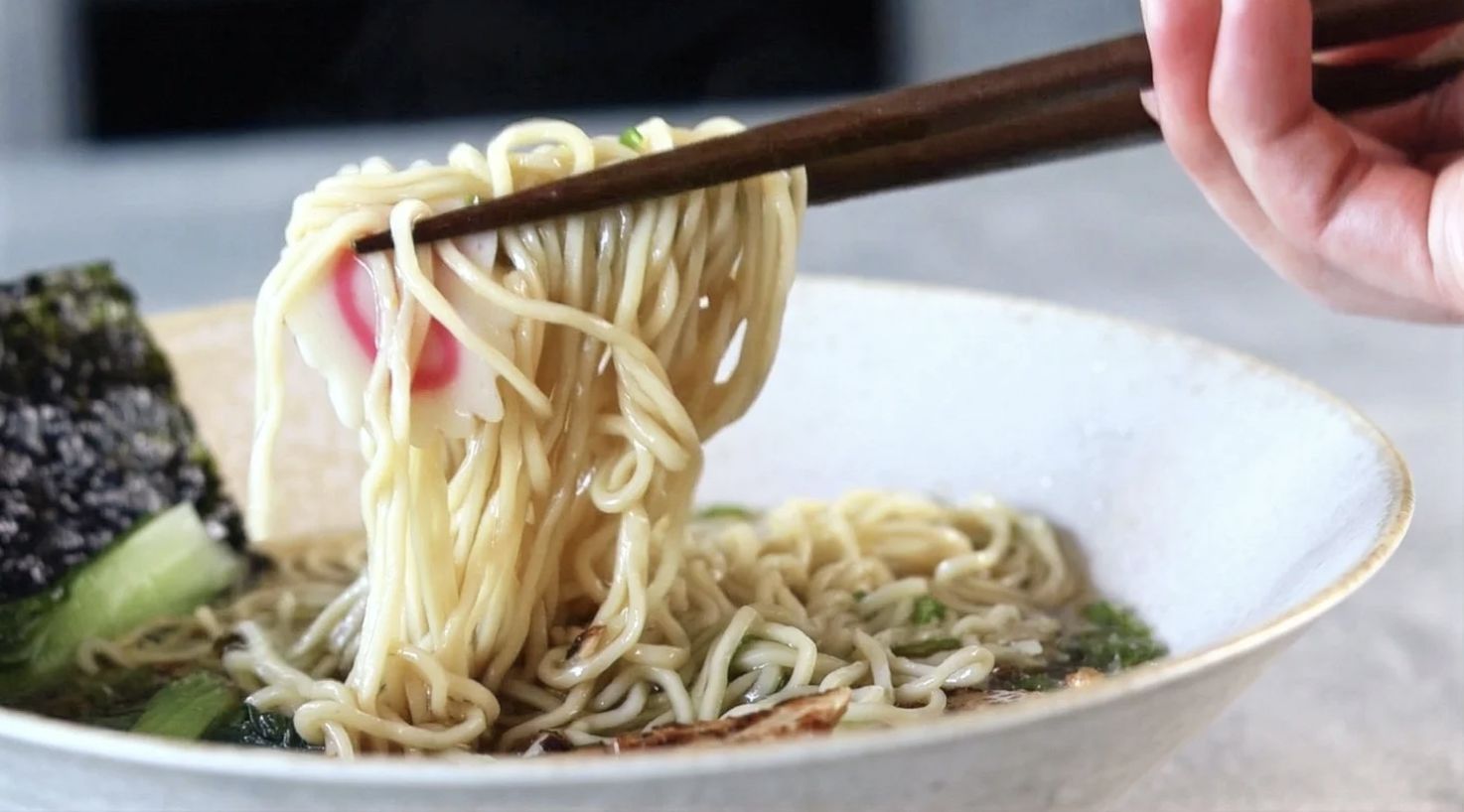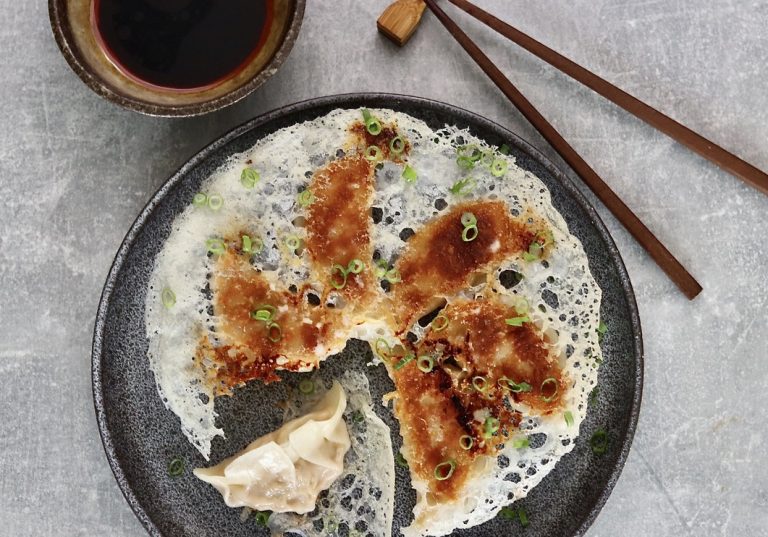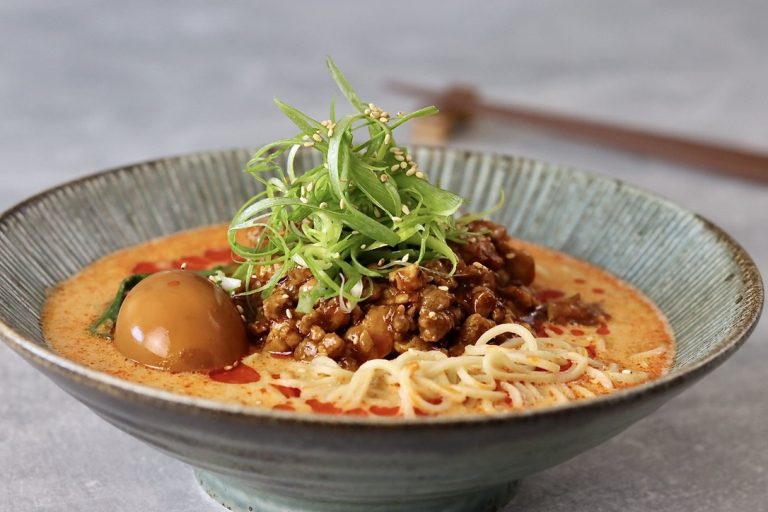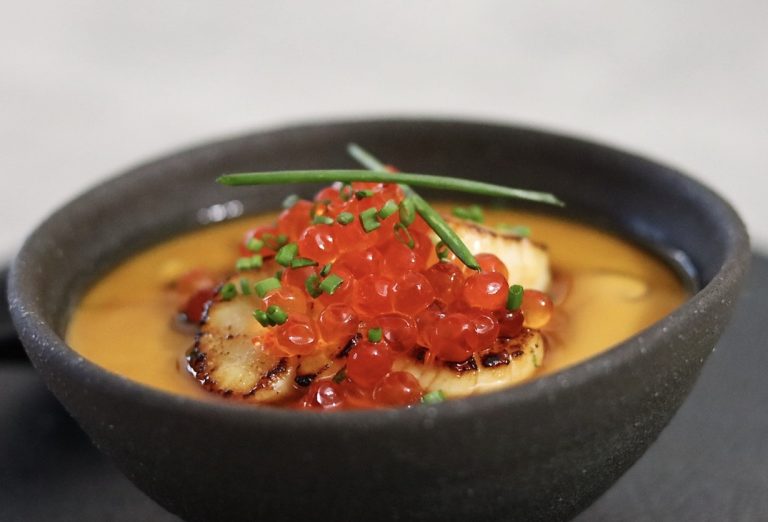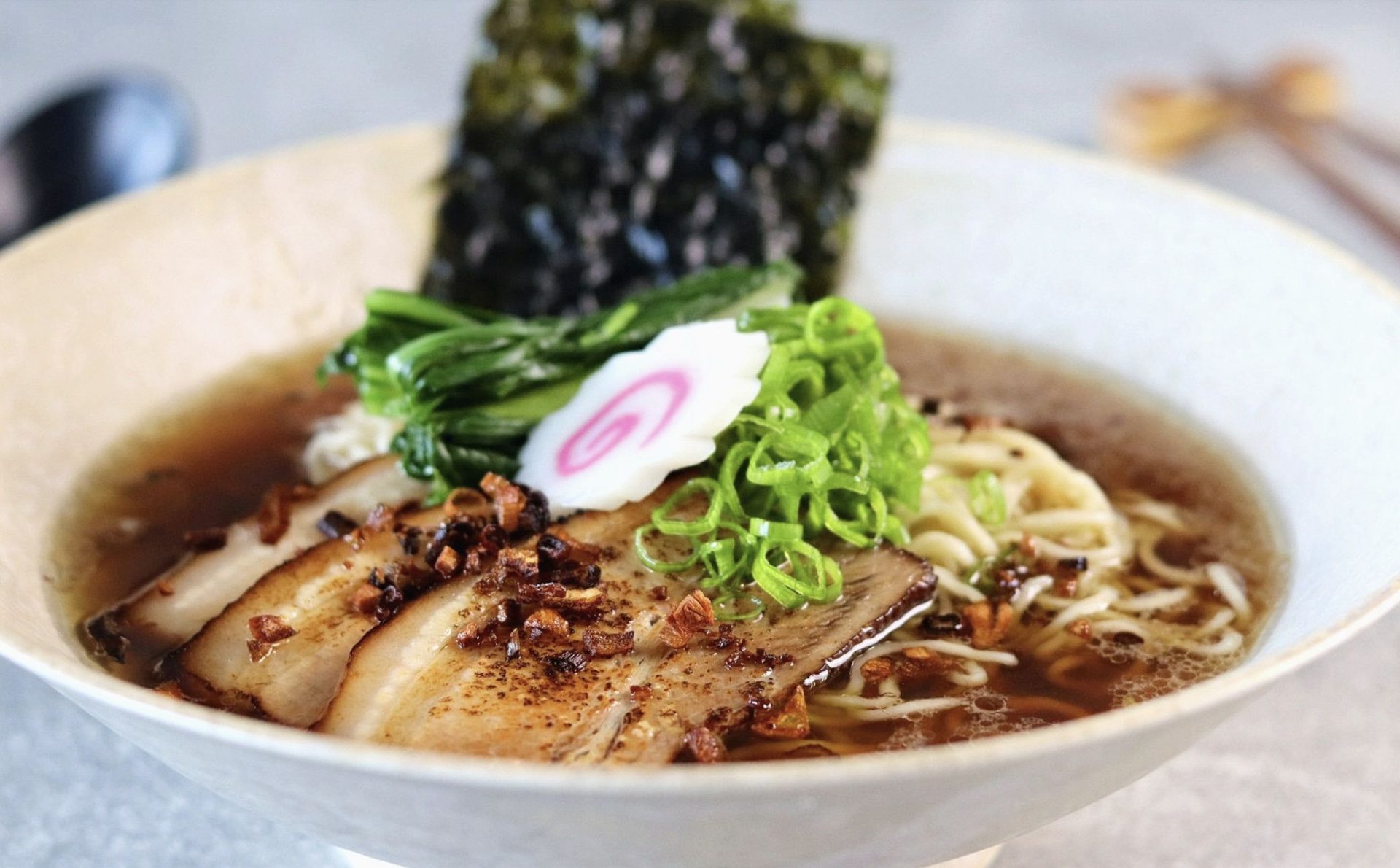
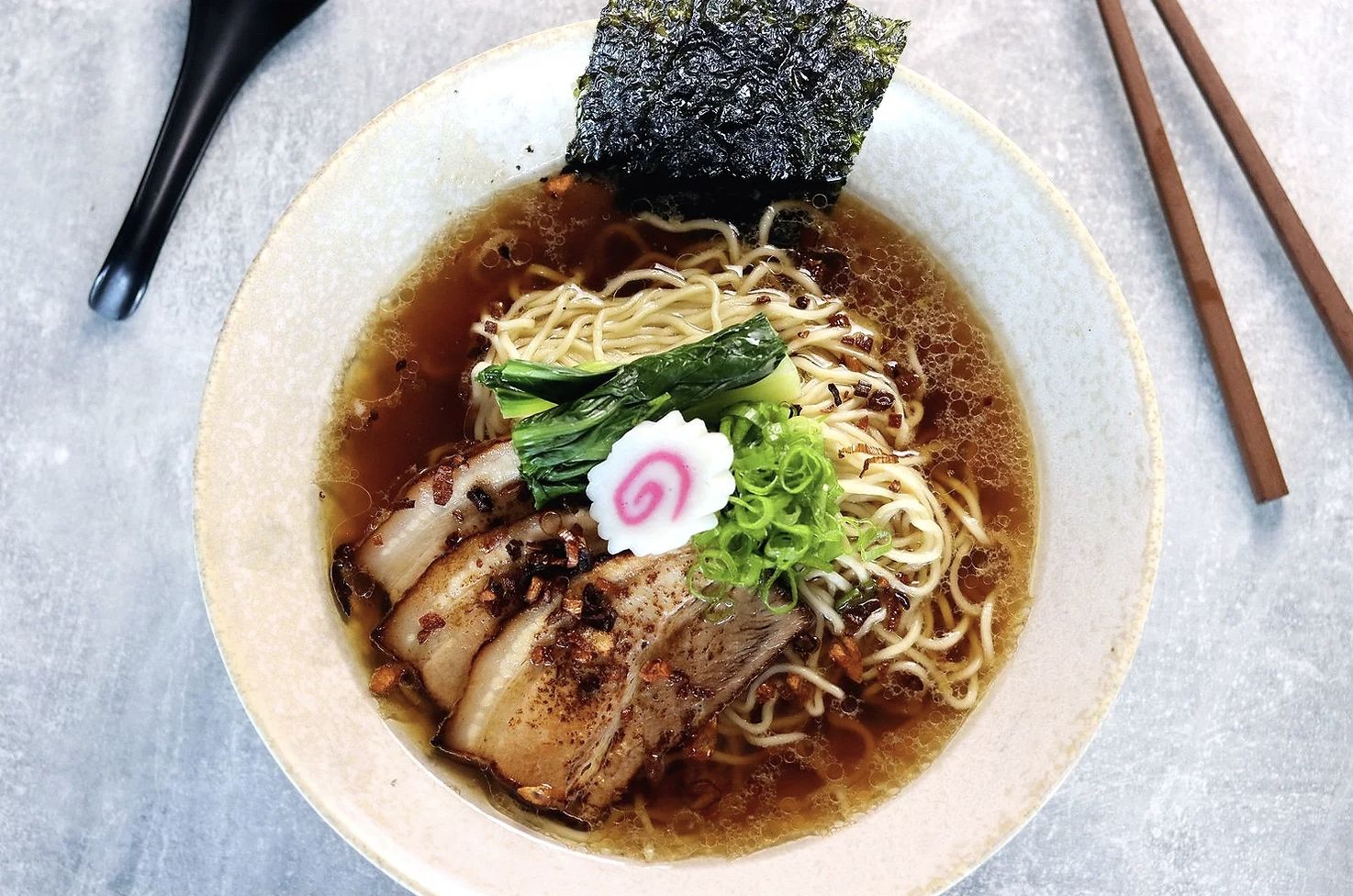
Intro:
This recipe focuses in on the foundation of a classic Tokyo style Shoyu Ramen. As for the soup I went with a double soup method consisting of a chicken broth and a dashi. There are 5 key elements to ramen, the broth, tare, aroma oil, toppings and finally the noodles. The secret when creating a good bowl of ramen is when all these elements work together in harmony. The other element that is also needed when making a good bowl of ramen is time. With all that said let’s make Shoyu Ramen!
Method:
Tare:
Let’s begin this ramen recipe by making the tare. I find the tare needs at least 2 days to mature and to give the umami the chance to really develop so let’s start here. In a small saucepan add 10g of kombu and 250mls of cold water. Leave this to soak overnight the day before we begin to make the tare. The following day, add 250mls of light soy, 5g of sea salt and 10mls of mirin. Place the saucepan onto a medium heat and bring the temperature up to 80°c.
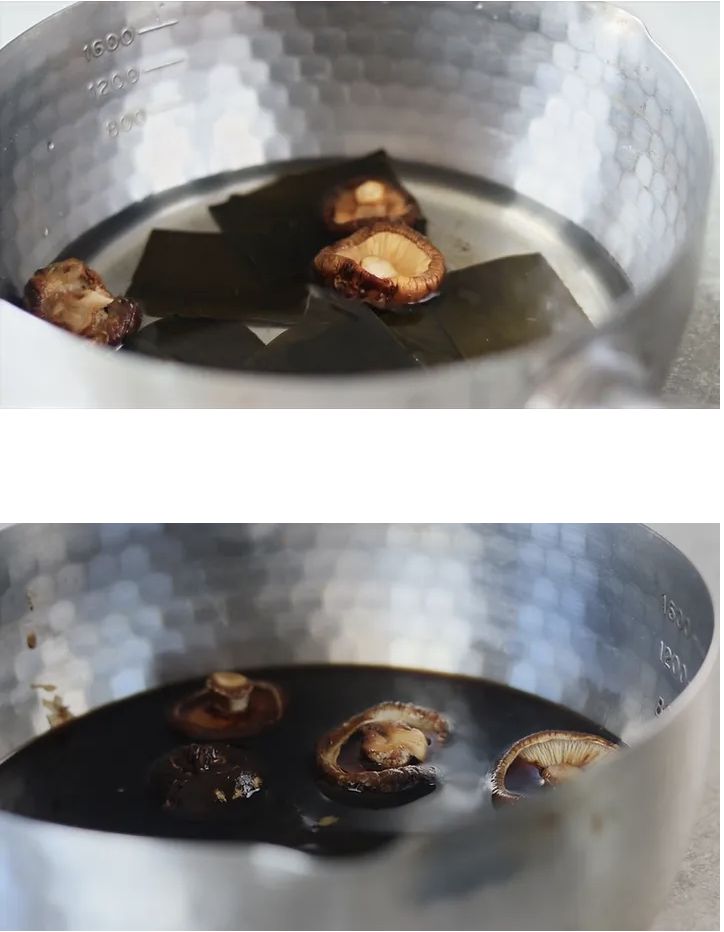
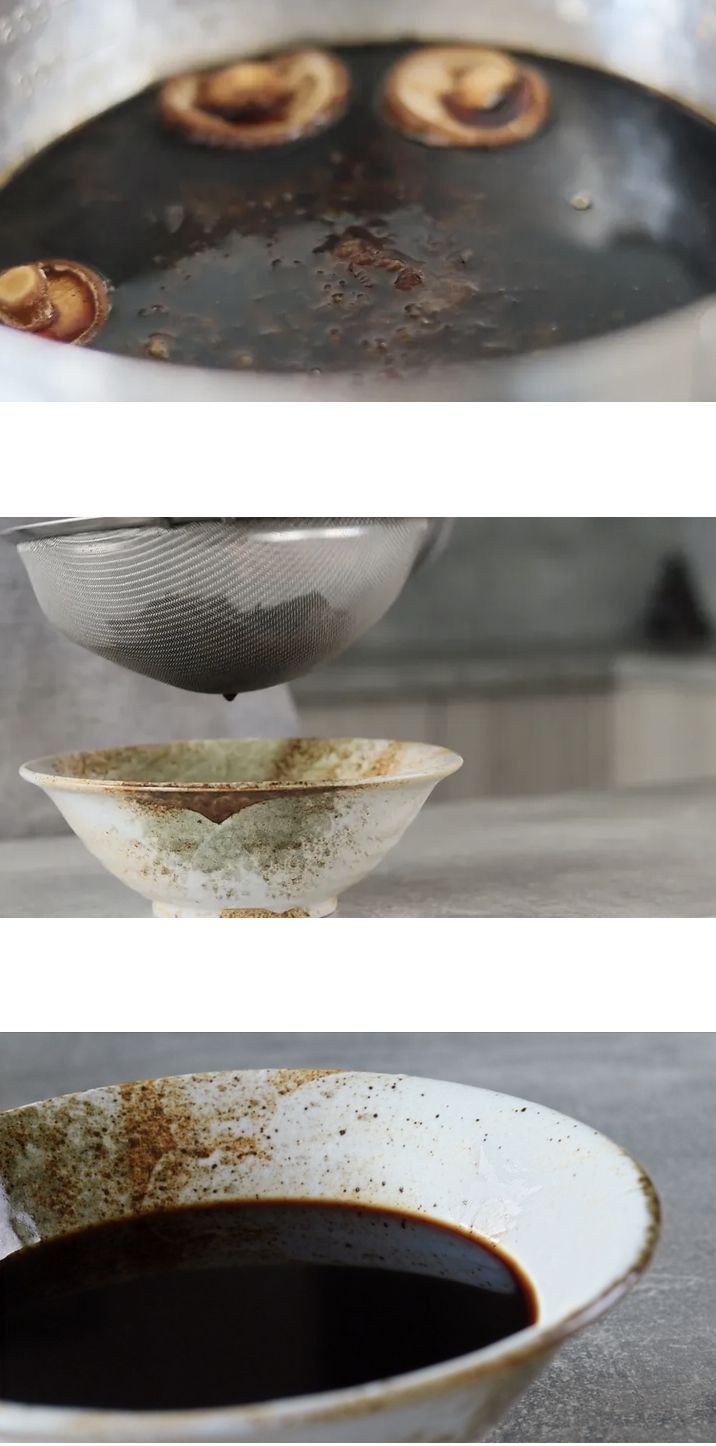
Chashu:

3. Now that we have our tare we can move onto making up the chashu for the ramen. This is a very method on how to make chashu for ramen and additional steps in rolling the pork or using more aromatics can be added. In a deep saucepan add a 500g slab of pork belly with the skin removed. Next, add 10g of finely sliced ginger, 2 peeled garlic cloves, 100mls of mirin, 200mls light soy, 2 tbsps of dark brown sugar then top with enough water to just cover the pork. Place the sauce pan onto a high heat and bring the liquid up to a boil. When boiling we now want to turn the heat down to a simmer and place a lid over the saucepan slightly cracked open. Allow the pork to simmer for 90 minutes or until the pork becomes slightly jiggly.
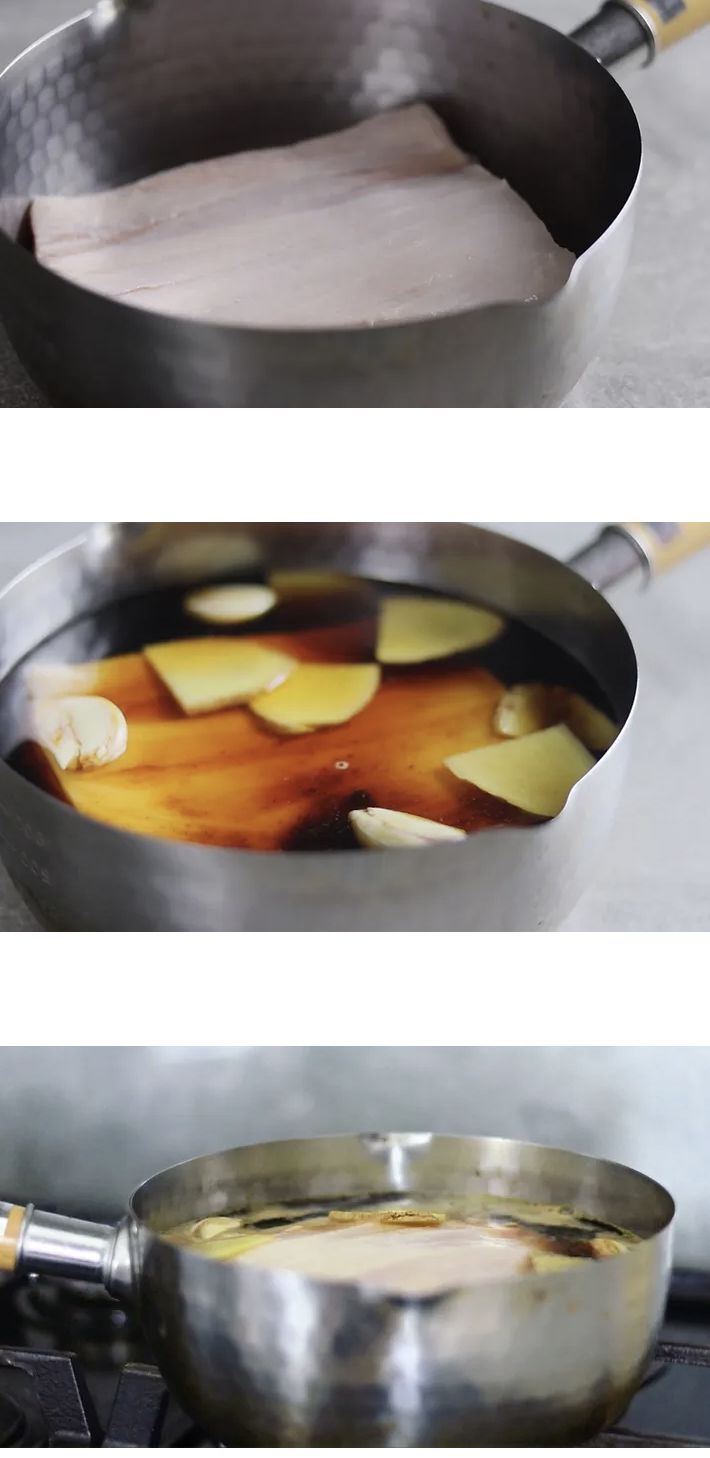
4. After 90 minutes of slowly cooking the pork should be ready. Remove the pork belly from the liquid and place onto a wire rack to cool and slightly dry. As for the liquid this can also be used to make ramen eggs or even menma which are marinated bamboo shoots. When the pork belly is cool, place into a hot oven set at 180°c and roast for 20 minutes or until nicely roasted. Allow the pork to cool and we will slice and reheat just before serving the ramen.
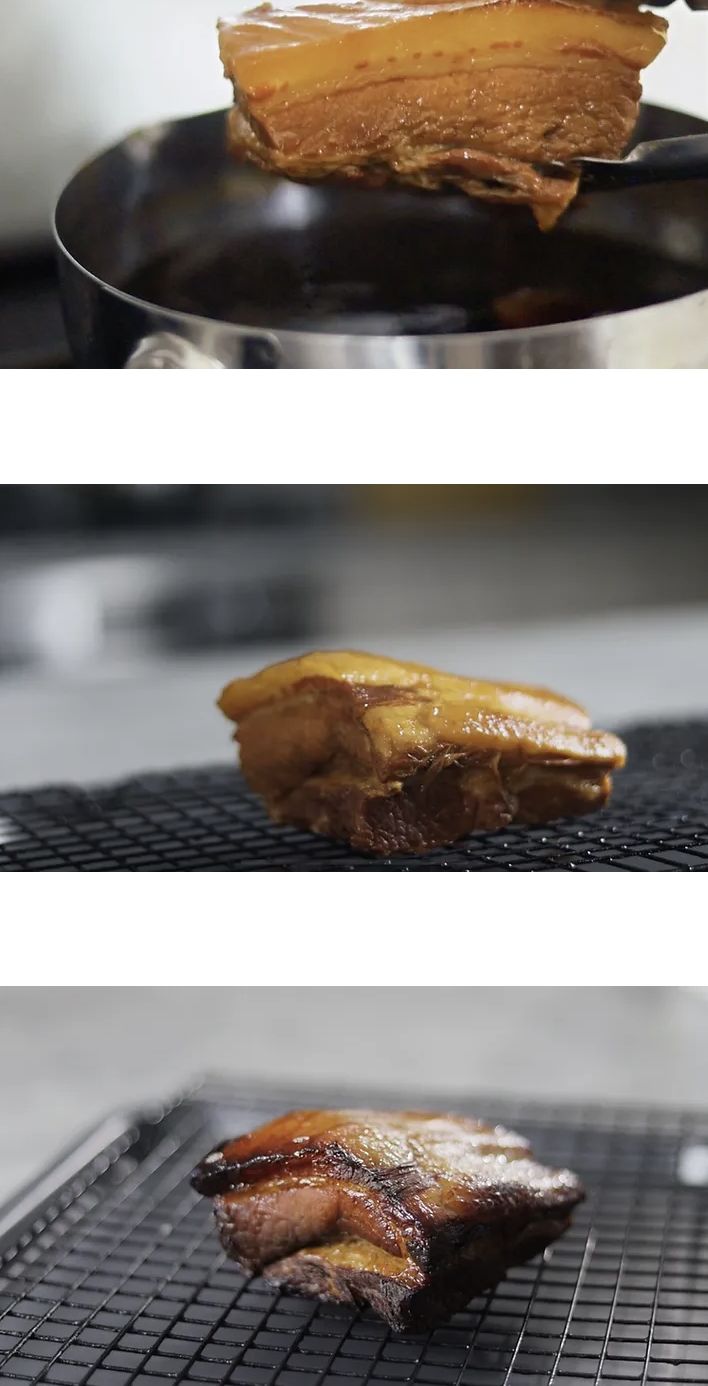
Soup:
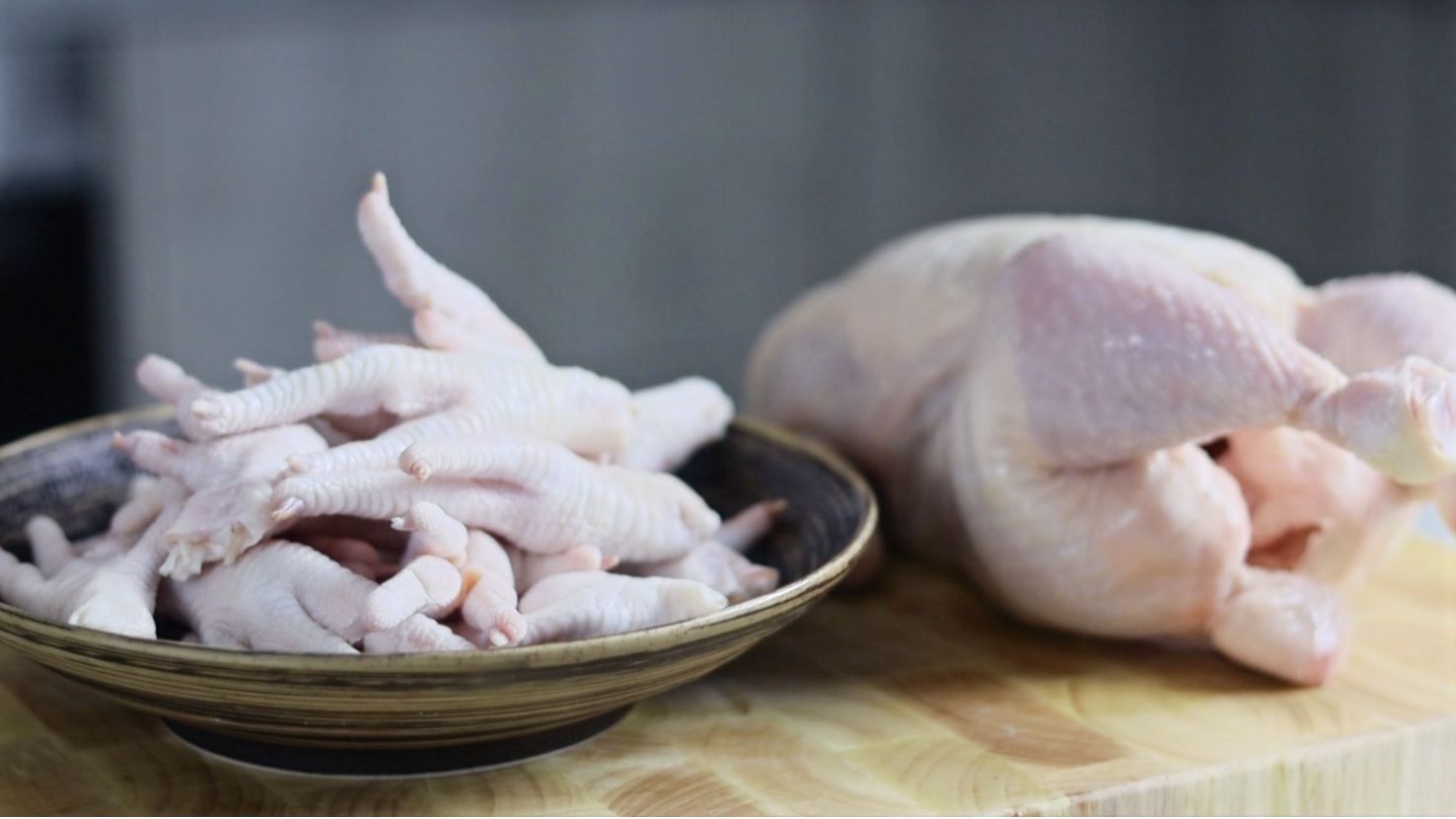

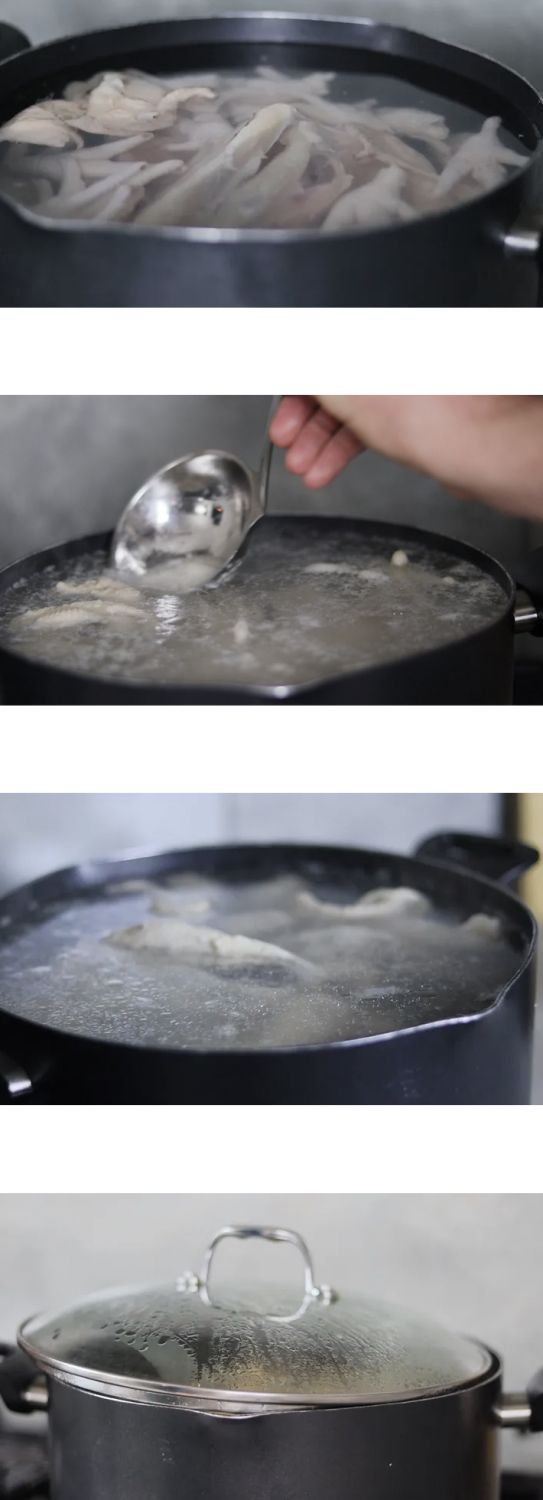
Dashi For the soup:
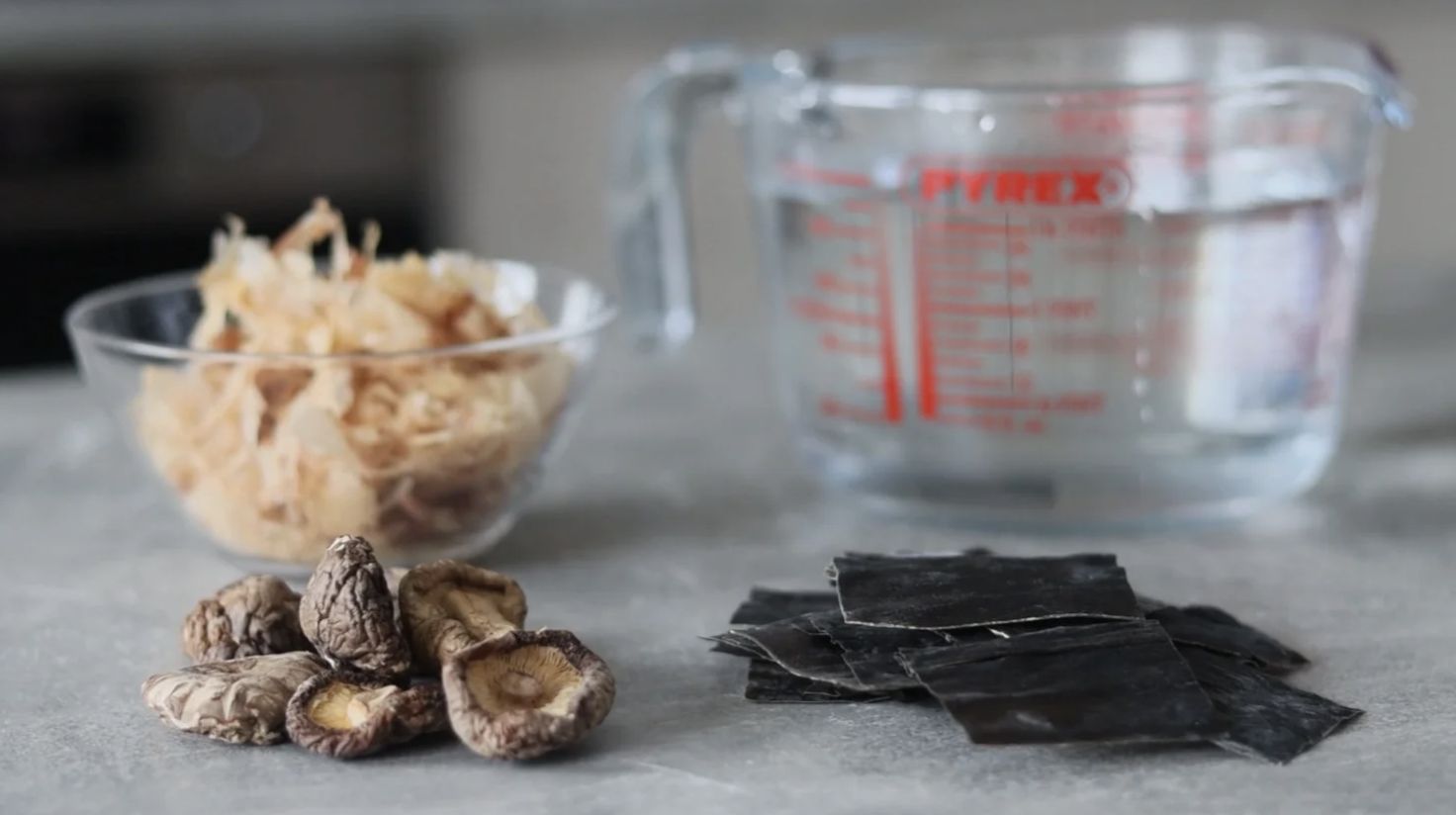
7. Whilst we wait for the soup to cook we can move onto the other soup which we will combine in with the chicken soup at the end. This can be made up the day before for a much better umami. Start in a saucepan by adding 15g of kombu and 10 dried shiitake mushrooms. Next add 750mls of water then allow to sit for 30 minutes (the night before would be best). Place the saucepan onto a medium heat and bring the temperature up to 80°c. When at temperature remove the kombu and shiitakes then bring the temperature up to 90°c. Finally add 10g of bonito flakes and remove the saucepan from the heat. Set to one side and allow to steep for 15-20 minutes.
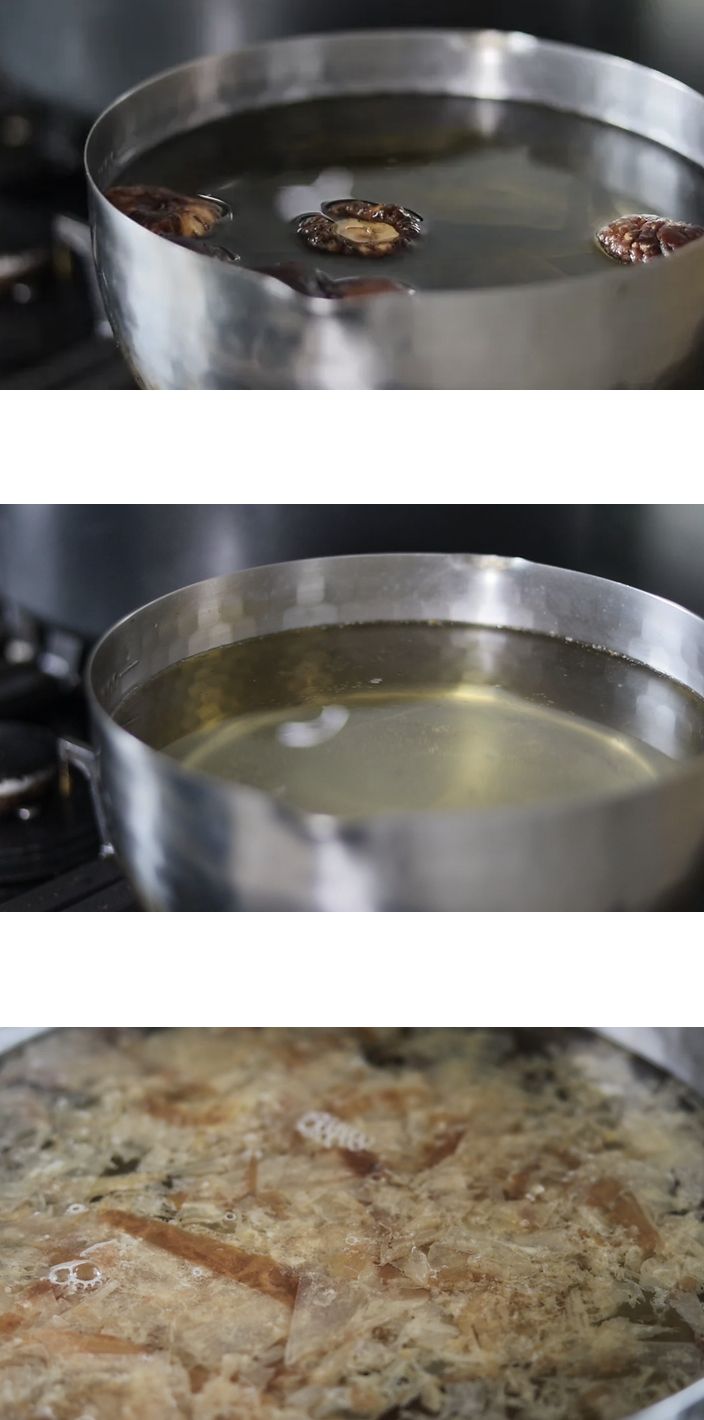
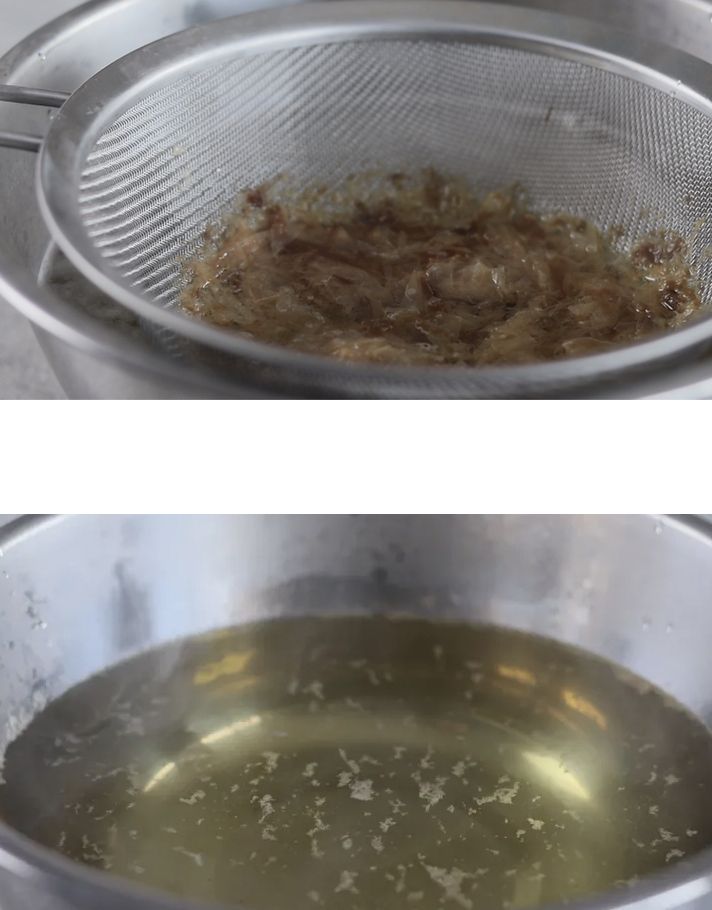
Aroma Oil:
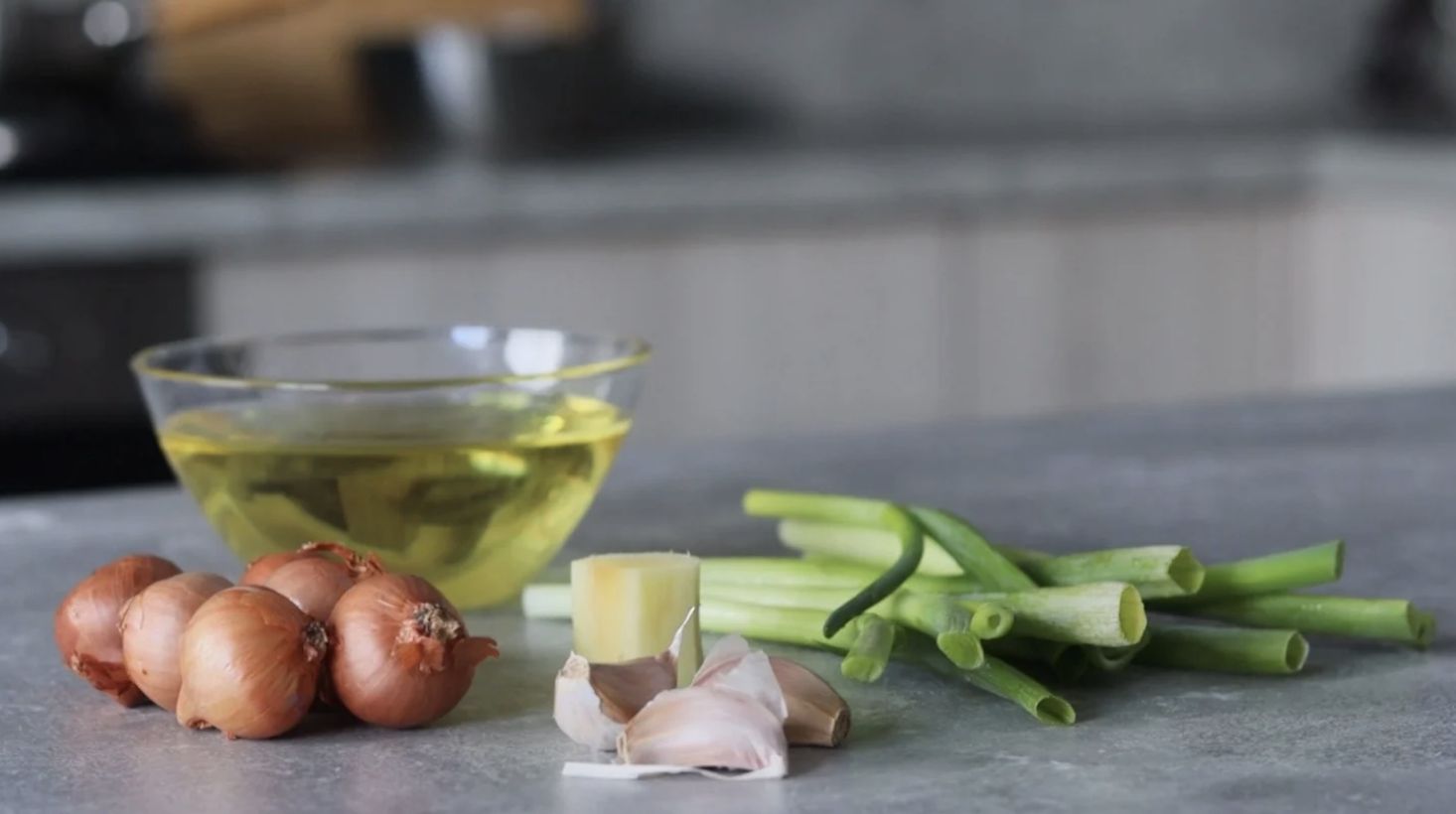
9. Now to make an aroma oil, this will add another depth of aromatics to the ramen and to also work in harmony with the broth and the tare. Start by finely slicing 5g of ginger, 2-3 shallots, 3 garlic cloves and 2 spring onions. Now place a small saucepan onto a high heat then add 150mls of cooking oil and the chopped aromatics we just prepared. Fry the aromatics until deeply golden brown almost just before the point of being burnt.
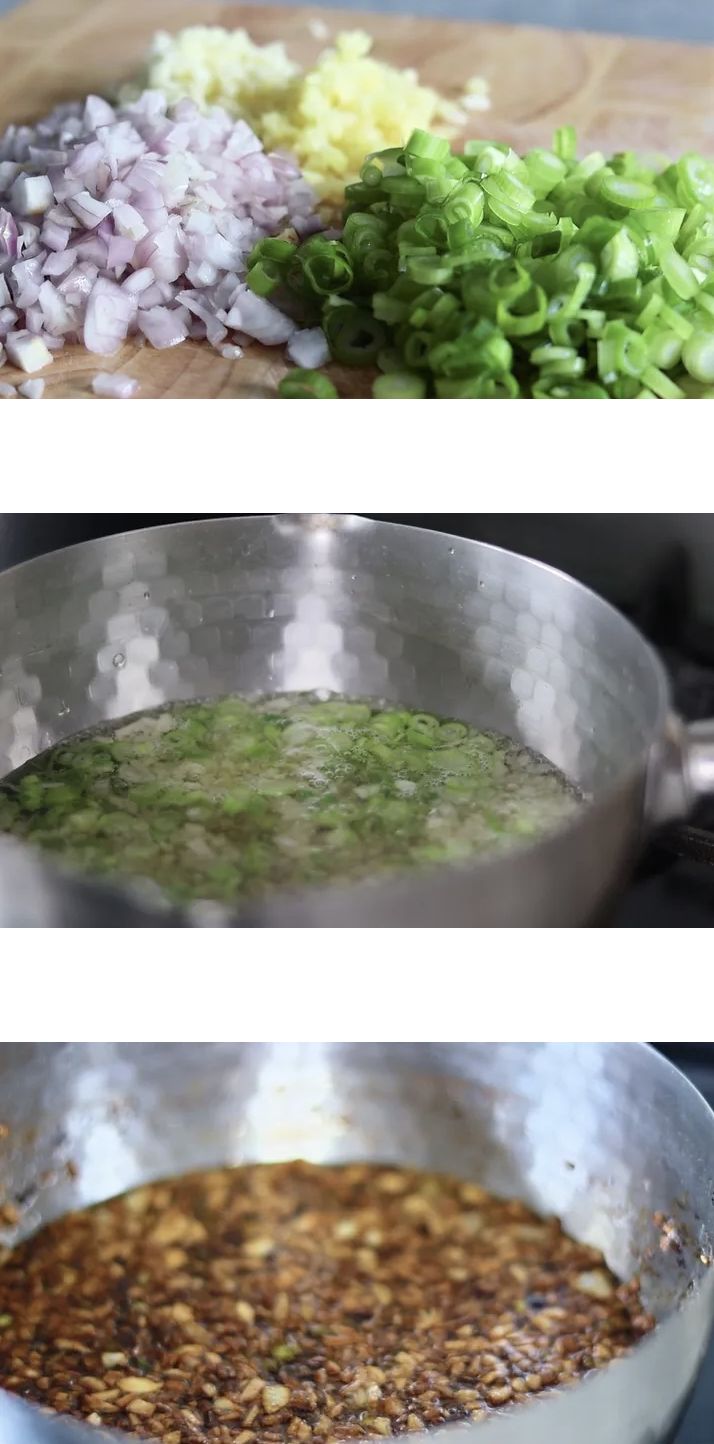
10. When the oil is ready pass through a fine sieve into a fresh container and the aroma oil is ready. As for the golden brown aromatics drain these onto a piece of kitchen paper and store these to one side also. We will use these as a topping also and these are known as Aganigi.
Soup Aromatics:
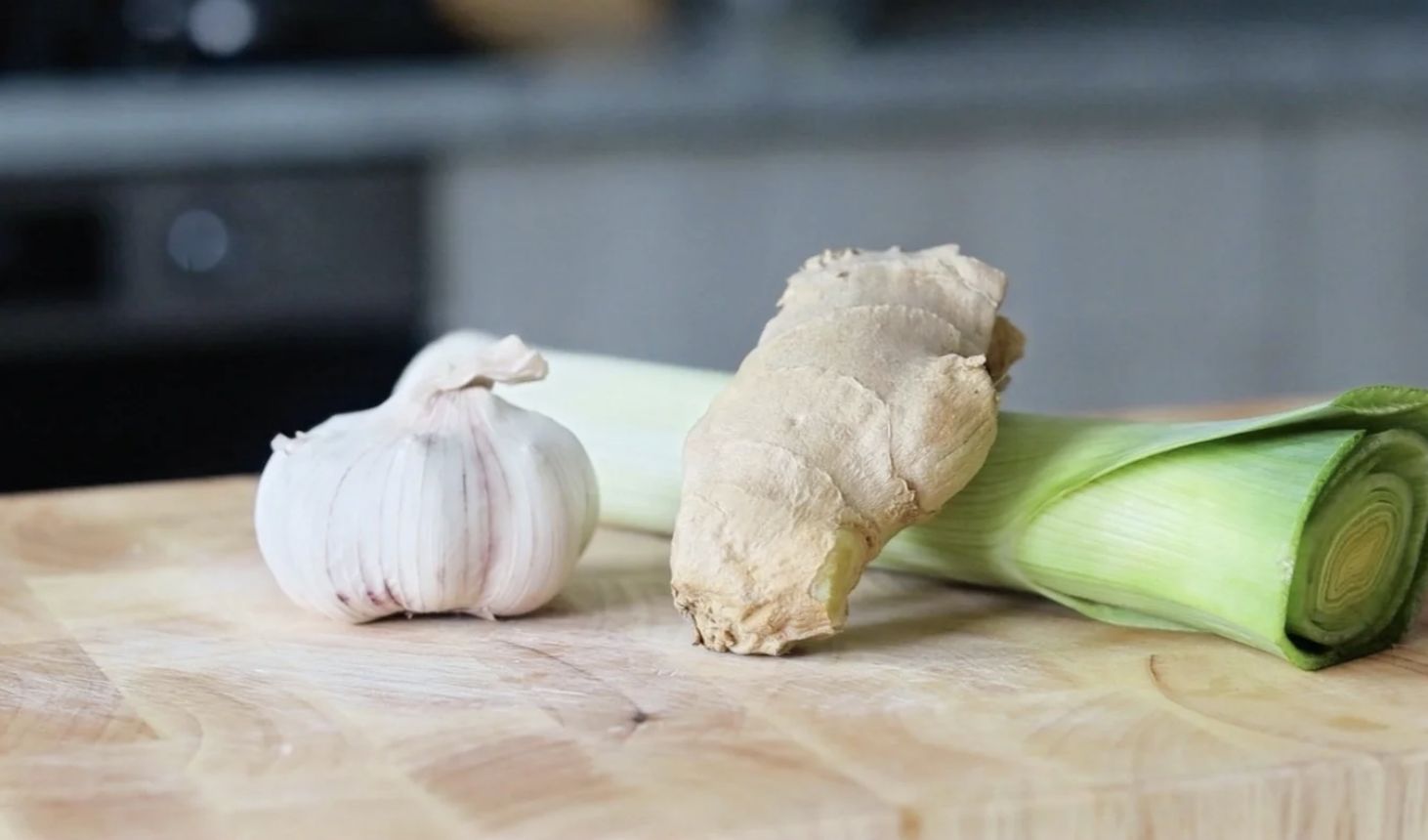
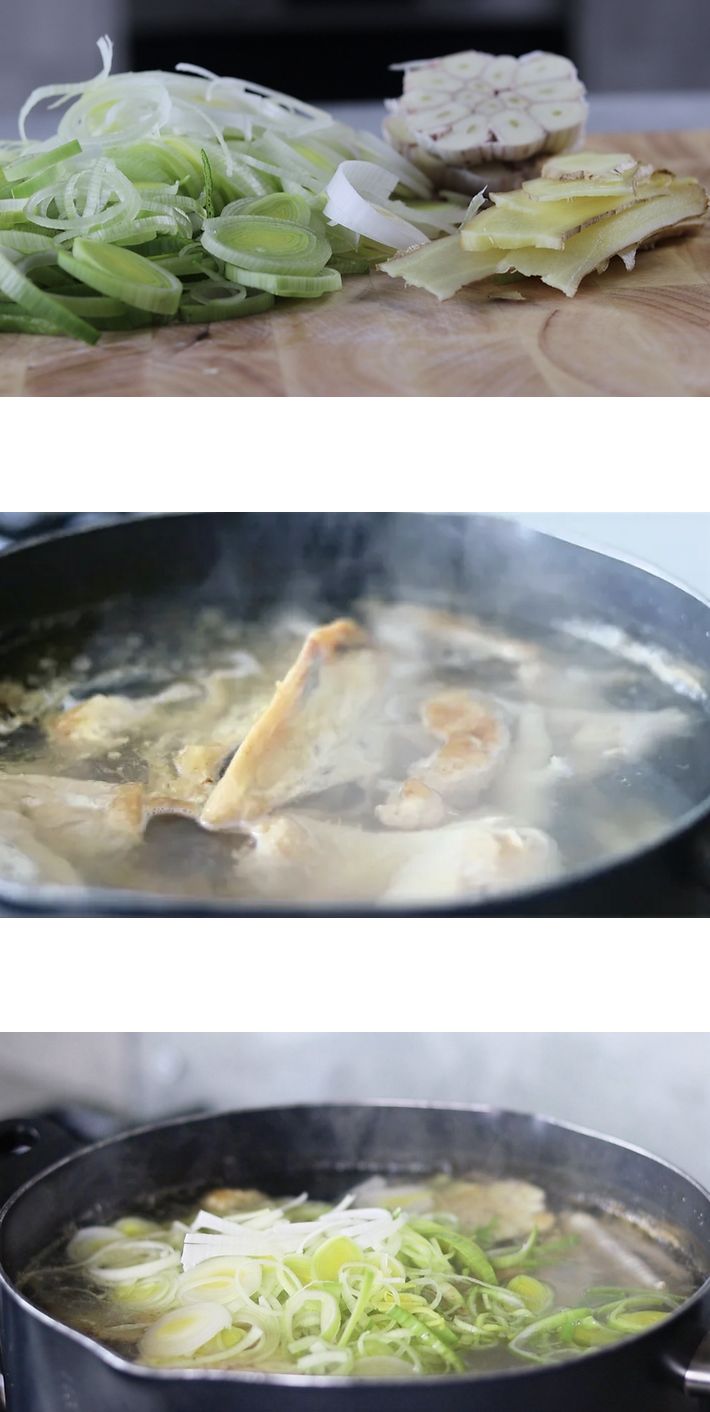
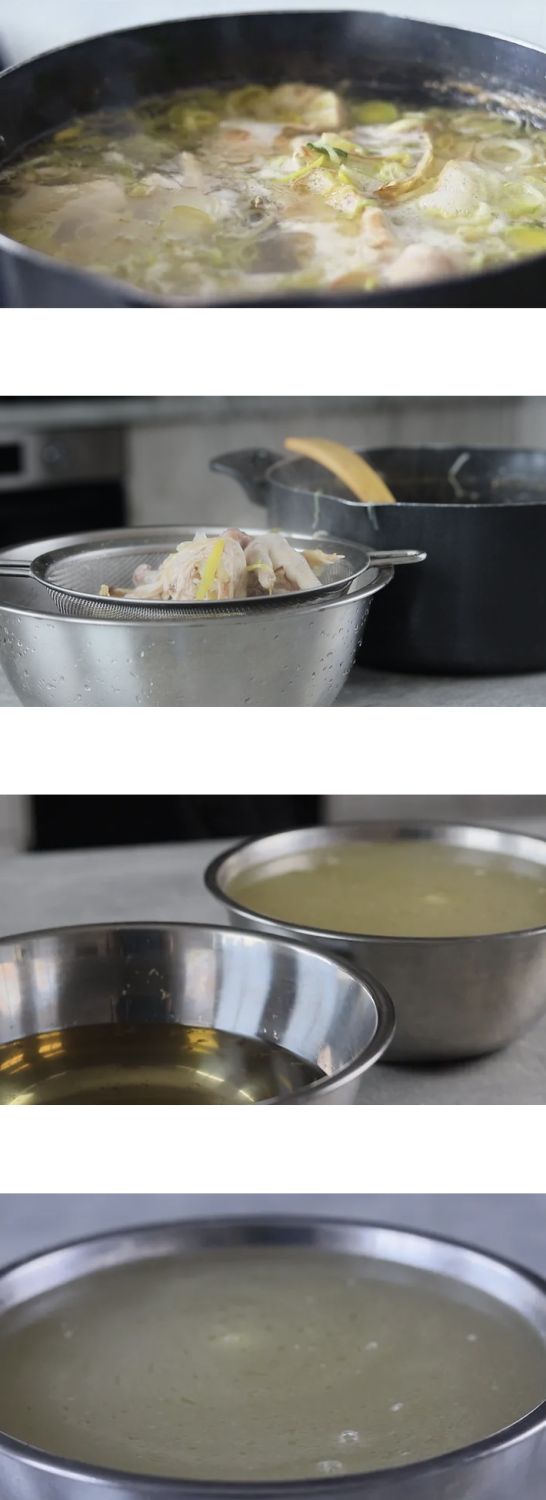
Toppings:
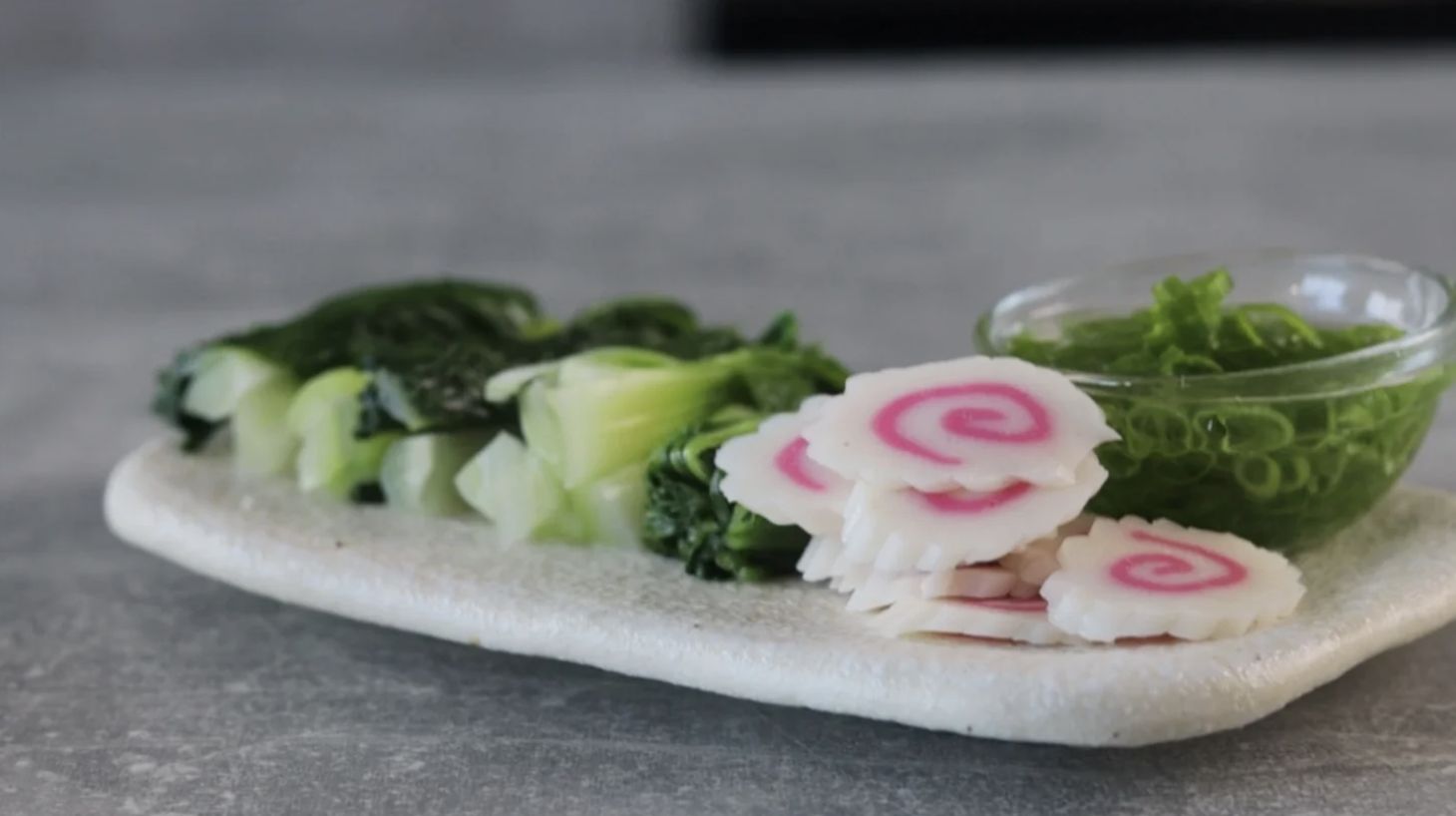
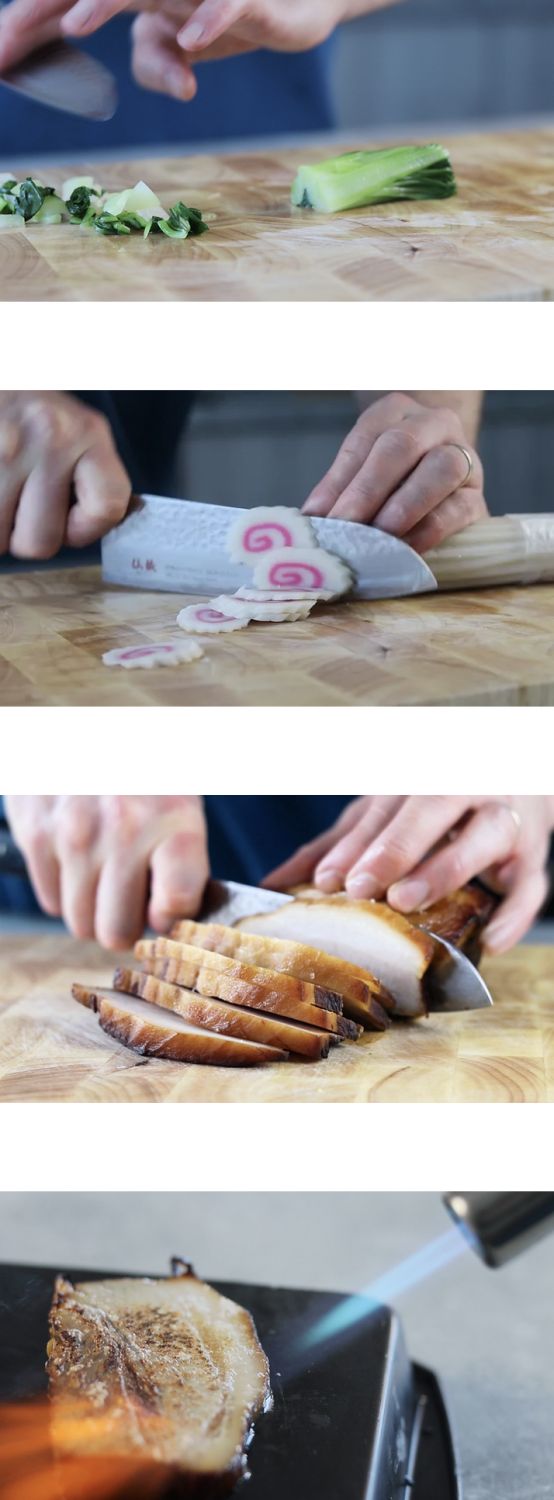
14. The last and final step to the ramen is to cook the noodles. Ideally this wants to be done, literally whilst building the bowls of ramen. I always use homemade alkaline noodles for ramen and depending on which type of ramen I’m making would depend on the hydration of the noodle. As this recipe is long enough already I will leave the recipe on how to make those and a more detailed breakdown of ramen noodles here. To cook the noodles add to a boiling pot of water and cook for literally 45 seconds or if using dried to what the packet suggests. When cooked drain as much as possible and all that’s left to do now is to build ramen!
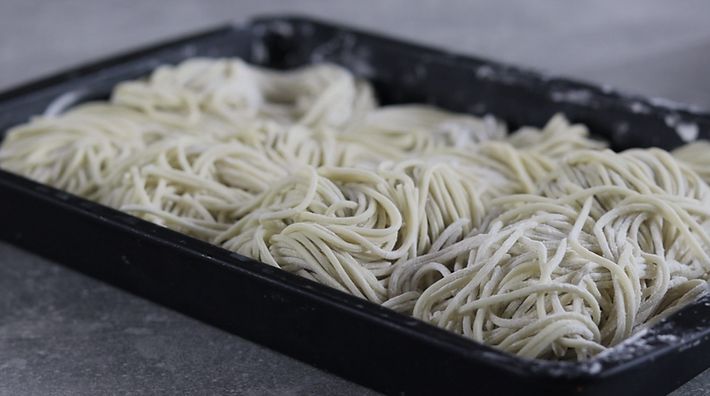
15. Now to build, start by adding 30mls of the tare into a serving bowl then add a drizzle of the aroma oil and an optional brief zesting of a fresh lemon. Next ladle over 300mls of the hot broth then empty out the drained noodles into the bowl. Top with the charshu, blanched greens, spring onion, kamaboko, fried aroma oil topping and finally a few nori sheets on the side. Take a deep breath and chase that noodle dream or something like that!
